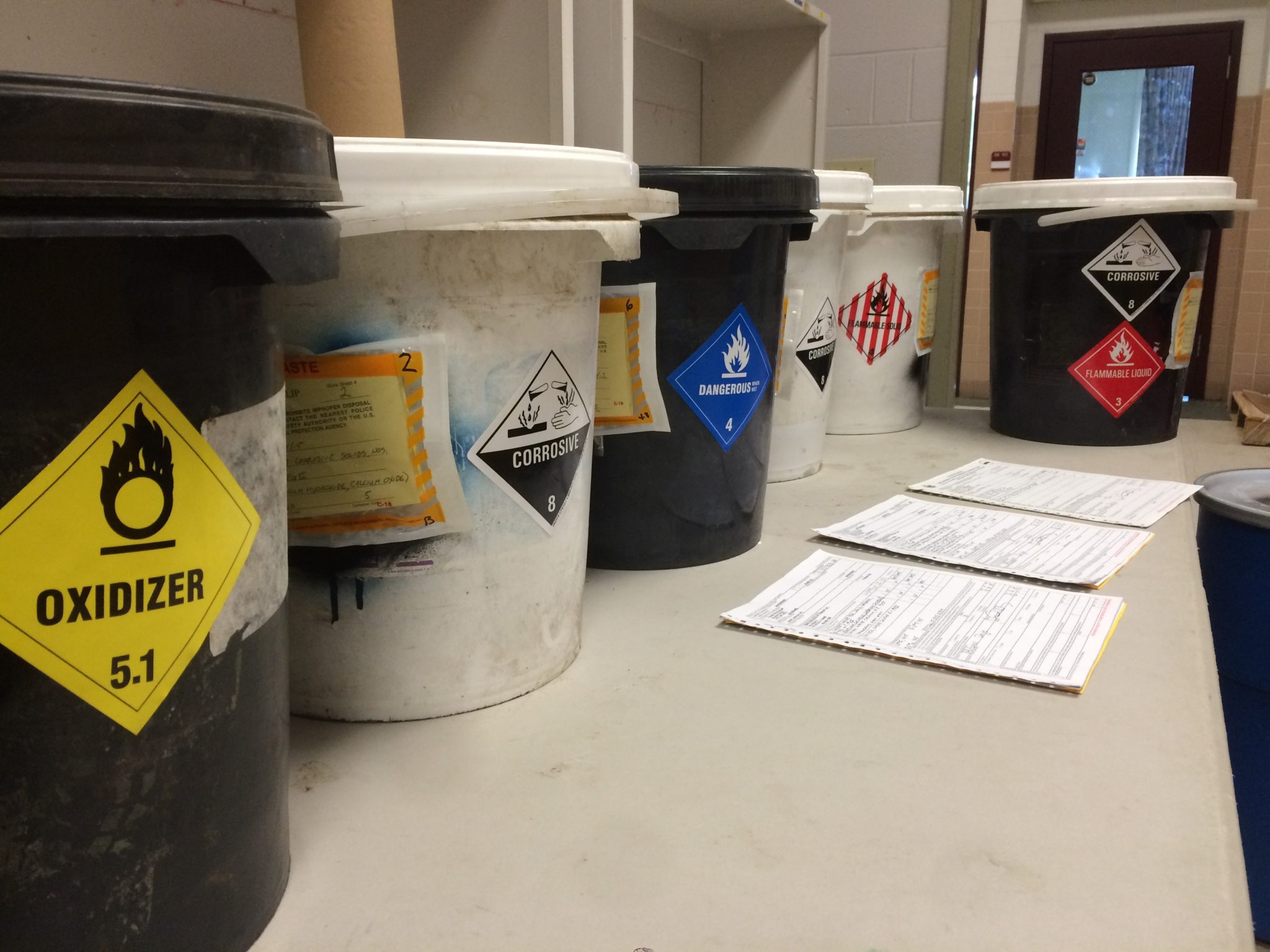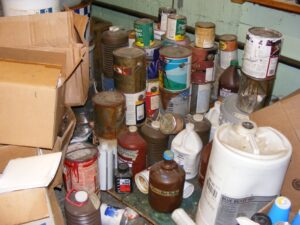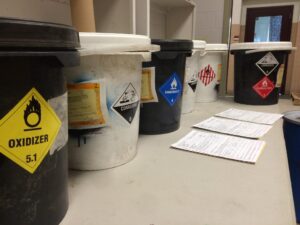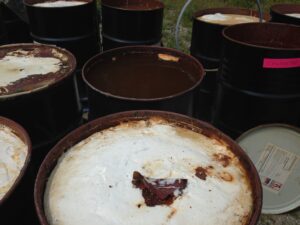
There are many requirements that revolve around containers storing hazardous wastes. People often remember that there are specific ways to handle hazardous wastes (even if they are not qualified to do so) but proper storage often gets overlooked. A container is any portable device in which a material is stored, transported, treated, disposed of, otherwise handled (§260.10). Common containers are drums of various sizes (5, 15, 30, and 55 gallons are the most common). So how do you make sure your storage area and containers are compliant? Keep reading to learn about 4 of the most common hazardous waste container violations:
1. Are your containers being handled properly in storage?
 All containers need to be closed except when adding or removing waste. In order to be considered “closed,” a drum is required to have all snap rings tightly bolted, bungholes capped and lids secured. The only exception being, a funnel with a sealing lid threaded into a bunghole. Containers should not be opened, handled, or stored in a way that could cause rupture or leakage.
All containers need to be closed except when adding or removing waste. In order to be considered “closed,” a drum is required to have all snap rings tightly bolted, bungholes capped and lids secured. The only exception being, a funnel with a sealing lid threaded into a bunghole. Containers should not be opened, handled, or stored in a way that could cause rupture or leakage.
2. Is the container compatible with your hazardous waste?
Many states do not outline a specific type of drum that must be used for different waste streams. However, there is a general requirement that the container must be compatible with the hazardous waste it is storing. A great example of what not to do is storing corrosive waste in a metal drum, which could cause deterioration, the drum to fail and release the waste. Plastic or plastic-lined drums are great solutions for corrosive wastes. For any non-corrosive hazardous wastes and flammable liquids, steel drums are a good choice.
3. Do you have proper labels on containers?

Any container holding hazardous waste is required to be labeled with the words “Hazardous Waste”. Each hazardous waste label has specific requirements so you must be certain you have all necessary information properly filled out. One important aspect of filling out the label is having the proper accumulation start date. This date will go on the container label and is the date waste is first put into the storage container. The date is a very important aspect, because it shows whether or not the waste is being stored on-site longer than regulations allow. Failing to put the accumulation start date is one of the most common violations that occur in facilities that generate hazardous waste. Labels must also stay in good condition; if they are torn or become difficult to read, they must be replaced.
4. What is the condition of the container?

The condition of containers is essential as it helps to prevent leaks and spills. Assuring that drums are not rusting or damaged should be on every hazardous waste generators checklist. If a container is damaged, the contents must be transferred to another drum following hazardous waste handling procedures. A spill would result in an emergency response call or employee exposure. Be sure to choose the right container and regularly inspect its condition when in storage.
To learn more about hazardous waste container violations, please contact us at MLI Environmental today!
